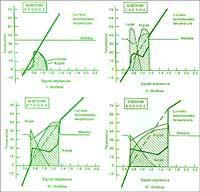New vision of ecology. Hypothesis Topic
Introduction Introduction Introduction Introduction
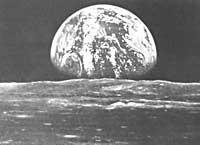
The hypothesis Gaia, which lately is raising a great interest among researchers from very different areas, is possible that in its line the roots of a new ecology emerge. What is the scientific basis for this hypothesis and what are its most discussed conclusions?
The first modern formulation of this hypothesis was made by James Lovelock. His friend William Goldin, author of the book "Eulien Jauna", gave his name.
The Topic hypothesis, first of all, says that the proportion and temperature of all reactive gases in the atmosphere have remained constant for a very long time, facing all external perturbations.

It is especially noteworthy that, although gases in the atmosphere are far from their chemical balances, their proportion has remained constant. Therefore, this theory suggests that life creates its own environment. Life reacts dynamically to cosmic and general crises, such as rising solar radiation or the appearance of oxygen in the atmosphere. This coping can be understood in two ways: the classic judgments, that is, as the Darwinian says, adapting them to overcome the crisis or contraerasot through own biological activity. The thematic hypothesis offers, therefore, a theoretical support for a new vision of life on Earth, both from a scientific and philosophical point of view.
As for the temperature point, most astronomers say that the Sun has increased its luminosity in the last four billion years, so it would be logical to think that the surface temperature has also increased. But as we have been able to deduce from the fossils, the temperature has remained practically constant. According to the hypothesis Gaia, this stability of the temperature is due to the surface life. Lovelock, through a simple model that starts from cybernetic concepts based on the growth, behavior and diversity of living beings, has explained that the characteristics of life provoke an active regulation of the surface temperature. Lovelock has created and analysed a world of jewelry to show that factors as important as the luminosity of the Sun can theoretically control biotas. In their models there are no hidden forces, it would only be consequence of the known characteristics of the intense regulation of temperature.
Regulation of atmospheric chemistry
Atmospheric regulation can be attributed to the growth and metabolism activities of organisms, especially to atmospheric gases containing sulfur and carbon, and to microorganisms with nitrogen transformation capacity. Before Lovelock released his World of Jewelry model, some had in mind that there was some control over the atmospheric methane concentration, the same could happen with the temperature.
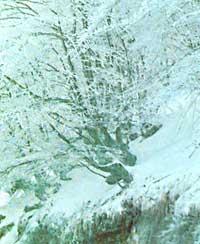
In addition, J. Shukla and Y. The words showed that the evaporation/perspiration of the forests controlled the concentration of water vapor in the atmosphere and, therefore, some characteristics of the time that had to do with this concentration. Although the work of these researchers is not carried out from the Gaia point of view, without knowing it they gave an example in favor of this hypothesis. Indeed, some studies analyzing the influence of the biota on the maintenance of the medium can now be reviewed in light of Gaia's hypothesis.
But, how can organisms actively regulate the composition and temperature of the atmosphere? For some it is difficult to believe that for millions of years the surface can be regulated without any forecast or planning.
To deal with these criticisms, and as mentioned above, Lovelock formulated the model called "World of Jewelry" to explain how biota regulates temperature. This model analyzes the temperature in order to clarify how to control it through the behaviors of organisms. The model is based on an analogy of the growth characteristics of organisms and cyber systems.
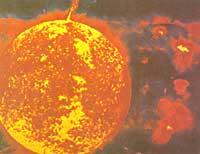
Assuming beforehand that it is a simplified model, then we will see that it is able to explain how it can be a consequence of well-known features of high temperature. These known characteristics are the exponential growth potential and the variable growth rates with temperature. That is to say, the fastest growth rate will occur at an optimal temperature for each population and decreases as it departs from the optimal temperature, with extreme high and low temperatures.
Any theory that tries to explain the regularization of temperature should take into account several observations: The ancient non-metamorphized rocks found in both South Africa and Australia show the existence of life in those times. These two sediments are more than 3 million years old. Since then, we have been able to collect indications that life on Earth has been constant, which shows that the average temperature of the terrestrial surface has not exceeded the boiling temperature of the water, nor has it suffered temperatures lower than that of freezing.
Assuming that in the middle latitudes the temperature of the terrestrial surface has not decreased to less than 10°C and that the periods of glaciation have been short, the temperature of the terrestrial surface has probably remained between 5 and 15°C in the last three million years. However, for many astronomers, the luminosity of the Sun has increased by 10% over the last four million years. Consequently, life (subject to hypothesis, of course) has acted as a thermostat. Although our luminosity values of the Sun are not very accurate, this does not reverse the validity of the results of the "World of Jewelry", since this model supports changes from the value 0.6 of the luminosity to the value 2.2 (being the current luminosity 1.0).
Cyber systems maintain constant variables, although disturbing conditions act on them. These systems are called homeostatic*, their variables (temperature, direction, pressure, light intensity, etc.) if they are determined based on the fixed starting points. Fixed starting points of this type can be 22°C from a thermostat or 40% humidity from a humidifier. If the starting point is not constant (variable in time) it is called operational point. The systems that use operational points are called homeorretic** and are opposed to homeostatic. The topic can be considered more homeostatic than a homeostatic regulation system.

All cyber systems will define at least the following aspects: sensor, input, gain (can be positive or negative) and output. In these systems, stability is assured by its ability to correct errors. In order to perform this error correction, the output value must somehow return to the sensor so that a new input compensates for the difference that has been generated in the output. This cyber analysis was intended to apply to the Gaia hypothesis, leading to the mathematical model of the World of Jewelry by Lovelock and Andrew Watson.
Model of the world of jewellery
As mentioned above, the jewellery world model arises to explain how the temperature of the earth's surface can be controlled. It makes very simple assumptions: there is only one polymorphic population of light and dark daisies. The reproduction of these daisies is effective and asexual regardless of the value*** of your albedo. The completely black daisies, that is, those of flank 0, absorb all the light and the totally white ones, that is, those of albedo 1, reflect all the light. If the albedo is 0.4, this means it reflects 40% of the light and absorbs 60%.
Now let us assume that the luminosity of the sun starts from a value 0.6 and is approximately doubled. Another assumption is that the optimal temperature is the same for light and dark daisies. Its impact is impossible below 5°C and increases as the temperature increases to 20°C. From there the growth returns to decrease with the increase of the temperature until reaching the 40ºC, where there is no growth.
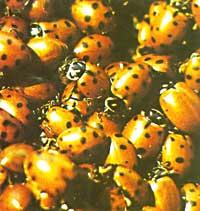
Darker daisies are supposed to absorb more heat at low temperatures and therefore grow faster than the lights. At high temperatures, however, clear daisies reflect and lose more heat and therefore grow faster than the dark ones. Let's now see some graphics.
In all the graphs it is assumed that the area destined for growth is constant. It is assumed arbitrarily that the albedo of the Sun is 0.5 and remains constant.
Dark daisies will cover the maximum surface at low temperatures and will produce a temperature higher than the average of the terrestrial surface. Clear daisies produce temperatures lower than average, which facilitates reproduction at high temperatures and will cover the maximum surface.
Let's now analyze four graphs. The only thing that changes from one graph to another is the albedo of clear, dark daisies. In the first chart, the albedo of light and dark daisies is the same as that of the sun. In this case, the will of the planet remains constant at a value of 0.5 and the average temperature of the Earth increases with the luminosity of the Sun. It is known that the growth of many Eucharistic organisms (and the same happens with the daisies of our example) is a direct function of temperature. Below 5°C and above 40°C there is no hail and the fastest growth rate is between 20 and 30°C.
In the second graph it is assumed that the albedo of clear daisies is 0.6 and the darkest of 0.4. In these conditions, that is, when the albedros of both are different and also differ from those of the Sun, they tend to homeostasis. The curve of dark daisies indicates that its growth is higher than lower temperatures. On the contrary, clear daisies lose heat and cover surfaces higher at higher temperatures (curve of lights). Comparing the temperature curve with that of the previous graph, it is observed that in this case the temperature is not a direct function of the luminosity, but is stabilized in a narrow range (between 0.8 and 0.1 of luminosity).
In the third graph it is assumed that the albedo of the daisies is 0.7 to 0.3 and in the quarter of 0.8 for the lights and 0.2 for the dark ones. Note that as we move forward in the charts, temperature control occurs in an increasing range of luminosity. We explain the world's lifeless temperature through a discontinuous line. In low solar luminosity, see graphics, those that expand are dark daisies, but all die when the lights have taken hold.
The limit of life of the clear daisies is at higher temperatures, but upon reaching those limitations, the temperature of the jewelry box world is the same as that of the lifeless world. When the albedo of clear daisies is 0.9 and the darkest of 0.1, the regularization of the temperature extends to the entire range in which the solar luminosity is 2.2 times greater. The greater the separation of albedo between both populations in general, the greater the tendency to homeostasis.

We have long been talking about the World Jewellery, but the reason is that, in our opinion, it is very important to see that the characteristics of exponential growth under different temperatures are sufficient to explain the beginning of a global mechanism of homeorresis of temperature. In general, the abundance of diversity (increasing difference between two types of jewelry and albedo) allows a greater capacity for regularization and growth of the population size.
The World Jewellery is not a model. However, and despite the simplification made in it, it is evident that the thermal homeorresis of the biosphere is not a witchcraft and a mechanism. Generalizing the conclusions obtained in this model, it has been considered that, for a long time, salinity in marine waters has remained constant and that the coexistence of reactive gases in the atmosphere may be due to the influence of living beings. The most important contribution of the Joyero World model is that global homeorresis is possible without denying a single dogma used so far in biology.
The land is still surrounded by reactive gas
According to the hypothesis Gaia, the Earth as a whole behaves as a giant cyber machine or intelligent organism. This hypothesis adjusts to the ancient beliefs of many countries, but it is a more solid reason for the appeal that generates this hypothesis: the information of different fields of science is collected and is based on a modern and consistent information. Its clearest evidence may not be that of the World Jewellery, but comes from Lovelock's specialty: atmospheric chemistry.
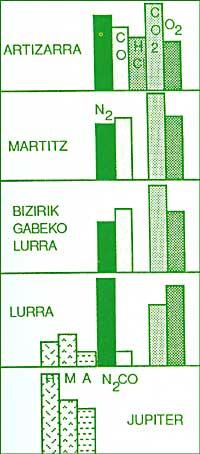
In the field of chemistry, the Earth's atmosphere is not "normal." I. Analyzing the table we see: In an atmosphere with 20% oxygen the gases are far from the proportions that could correspond to other gases. Many reduced gases in the oxidizing atmosphere. That is our atmospheric situation. The evidence of this convinced Martitz that the space ship Lovelock Viking was totally useless to know whether or not he was alive: On Mars the atmosphere complies with the laws of chemical equilibrium, so it considers that there it cannot survive. The terrestrial atmosphere is, in no case, the intermediate between the atmospheres of Artizar and Martitz. The main component of both is carbon oxide (IV) and there is hardly any free oxygen. In the Earth's atmosphere, on the contrary, the main component is nitrogen and oxygen is only one-fifth of the air.
II. The table shows, among other aspects, the comparison between the inert atmosphere of the Earth and the current one. On Earth without life, heat, surrounded by carbon dioxide and free of oxygen. The land would have more similarity with its neighbors. In a chemically stable system, oxygen and nitrogen would react and a large amount of poisonous nitrogen oxide would occur.
Therefore, the presence of these unstable gases against other gases in large quantities in our atmosphere should be sufficient for all rational thinkers to begin to review what is currently said in the textbooks (i.e., that our atmosphere is for a long time constant and inert). The gases that tend to react violently in reality remain in the atmosphere in proportions suitable for life.
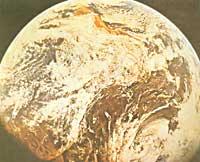
As for the atmosphere, according to Gaia theory, life synthesizes and continuously eliminates the gases necessary for its survival. Life controls the proportion of reactive gases in the atmosphere. Mars, Venus and the hypothetical Lifeless lands would have chemically stable atmospheres and 95% of their composition would be carbon dioxide. But this planet in which we live has no more than 0.03% carbon dioxide in its atmosphere. This curiosity is a consequence of the process of photosynthesis.
The photosynthesis of bacteria, algae and plants continuously needs carbon dioxide and after taking it from the air it will be fixed in solid structures. Photosynthetic plants and microbes, on the one hand, and all living beings that feed on them in general, on the other, when they die, remain in the soil in the form of organic or reduced carbon. After photosynthesis through solar energy and its subsequent death, plants, algae and bacteria have captured and buried the carbon dioxide of the atmosphere. Therefore, initially gas was abundant in the atmosphere of the earth, because of life there are fewer days.
On the other hand, let's think that the proportion of oxygen in the atmosphere has remained constant for a long time. If the proportion of oxygen in the atmosphere decreased by very little, many of the living things we need for breathing would be destroyed. On the contrary, if the proportion of oxygen was somewhat higher than what we know today, anything, like the jungles, would burn quickly. Therefore, it seems that the biota controls the concentration of oxygen and other gases in the atmosphere.
However, this hypothesis has a denier. These scientists consider it difficult for all Earth's organisms to "know" how to control living conditions. Lovelock's attitude towards criticism has been to work on the mathematical model of the World of Jewels we have seen a little earlier. At least now it cannot be said that it is a hypothesis contaminated by mysticism, since it has put all mathematical artilería working for its theory.
But in real life, apart from daisies, microbes play the most important role, since they are the ones that produce and control rare and reactive compounds. Surely they are the base of the ancient termostax of the Earth, through the production of gases that store the heat. From the evolutionary point of view, the forwards for the implantation of Gaia in the system are microbes. In this sense, since the forms of higher levels of life are interacting microbial sets, the Gaia phenomenon could be considered a microbial phenomenon. We, the microbes, are part of Gaia.
From an ecological point of view, Gaia leaves a gap for the study of human life. Recently we created, quite new and probably not very mature from the point of view of Gaia. On the other hand, the potentials we have to divert asteroids into space or colonize life on other planets, the possibilities of Gaia multiply
e
It means we are working on .
Knowing all the mechanisms of the topic well, we would be able to know how the biota has controlled its environment for at least 3 million years. Besides the philosophical value of the Gaia hypothesis, there is another totally interesting vision. Perhaps if all the mechanisms of this control were known, we could reuse them in other autonomous habitats of space. During the design of the space station, Gaia's natural technology could be applicable to get the proper supply of that station. And further taking the step further, turning a planet like Martitz into habitable would be a huge project that can only be imagined from Gaia's point of view.
* homeostasis: it is the maintenance of the inner balance to return to the previous situation giving controlled response to the changes produced by the medium in a biological system.
** homeorresis: It is the regulation of biological development towards a future form, as the adult form.
*** albedo: proportion that reflects a body from the solar radiation incident in it.
Buletina
Bidali zure helbide elektronikoa eta jaso asteroko buletina zure sarrera-ontzian




